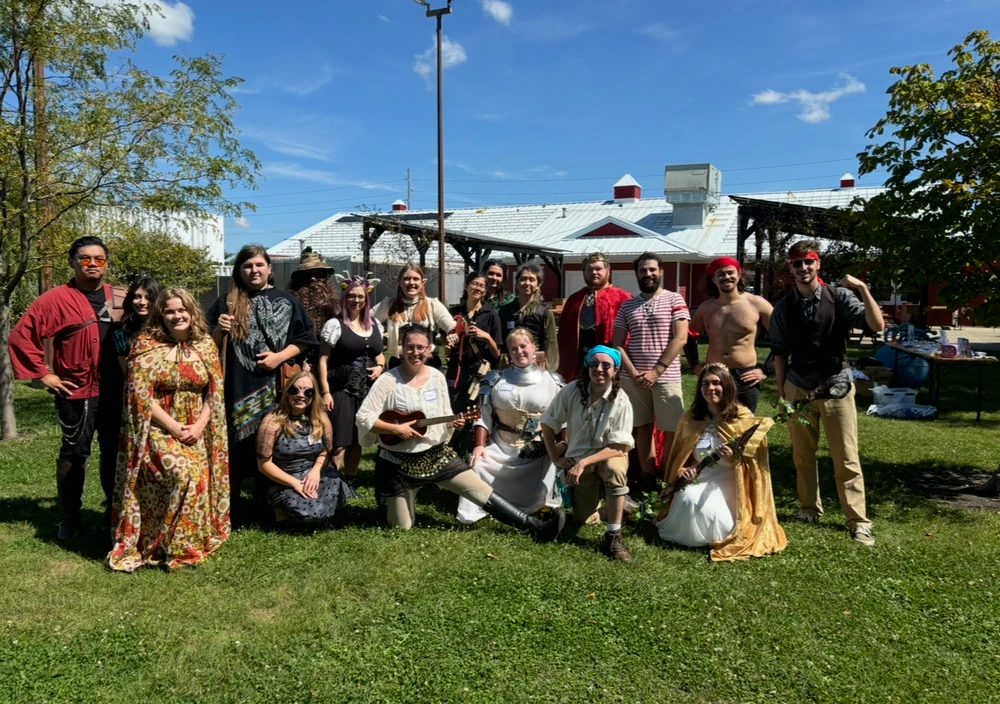
At the intersection of science, storytelling, and creativity lies the Multi-Planar Dragon Expo—an innovative outreach event that uses the magic of fandoms and fantasy to make real-world science engaging and accessible to everyone. Whether you’re a scientist, a fantasy fan, or simply curious about the biology behind dragons, this event promises something for all ages.
Hosted by the University of Illinois in collaboration with Cosplay for Science, the family-friendly event invites visitors to explore the life history, ecology, and behavior of dragons through imaginative, science-based exhibits. The event will take place at Riggs Beer Company (1901 S. High Cross Rd., Urbana, IL) on Saturday, October 18, from 1:00–5:00 p.m., with a rain date of October 19 or another weekend if both days have rain. Guests can look forward to presentations from scholars across realms both real and fictional as they join Dr. Bruce Bruceson for an afternoon of dragon biology. Costumes are encouraged, curiosity is required, and all are welcome. Please be sure to bring your sense of wonder and prepare to discover the science behind the scales.
Among the many contributors bringing this fantastical fusion to life is Olivia Baima, an Integrative Biology undergraduate student, and Joe Spina, an Entomology graduate student and current president of the Entomology Graduate Student Association (EGSA). Both Olivia and Joe share a passion for bridging the gap between scientific research and public understanding through interactive, creative experiences. From Viking-inspired dragon breeding to diagnosing diseases among Dungeons & Dragons (D&D)–style creatures, their stations invite visitors to explore how real-world biology can inform the worlds of fantasy.
In the following interview they share their inspirations, creative processes, and both the challenges and joys of blending cosplay, education, and science communication.
What inspired you to get involved with Cosplay for Science this year?
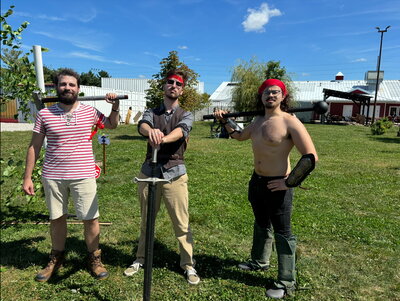
Olivia: This is actually my second year in the program! What got me to join initially was a desire for more
community outreach. What I had been doing at the college before was contained entirely within the University, so I wanted to branch out to the community itself.
Joe: I actually got to work with Cosplay for Science at last year’s inaugural event! Doing community outreach of any kind is one of my favorite things in the world, so being able to educate the public about biology in the process is simply too good of an opportunity to pass up.
How does this event combine your scientific interests with your love for fantasy or cosplay?
Olivia: This event allows fantasy and reality to cross over in a really amazing way and having to think about what real world mechanisms tie into something as mystical as dragons is a nice intersection of concepts that people don’t really think about a lot.
Joe: I think biology as a science is both intuitive for how connected we are to it as living beings, but also something that is so riddled with nuance and exceptions to rules that it can be a little dense for someone just getting into it. Being able to be a bit of a theater kid and yap about fantasy in costume and applying a layer of allegory to these real-world concepts can make the subjects we study much more accessible to the general public.
What’s the main message you hope visitors take away from your station?
Olivia: I hope people at my booth can understand how we can selectively breed and select for special traits in the natural world and end up with animals that benefit us socially or economically. If they can piece together that this is how we got dogs from wolves, that’s an even better bonus!
Joe: Simply put, diseases are scary, and people want to know why they emerge when they do and how they circulate. The COVID-19 pandemic showed that the public wants to understand the things that scare them, but there aren’t many good resources out there for people to educate themselves on the ecology of diseases, and I hope that my station can serve as a small primer to teach people the basics of that topic.
Why do you think outreach events like this are important for science communication?
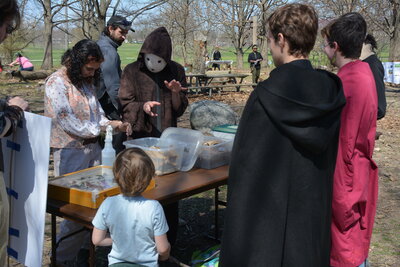
Olivia: Science can seem so unapproachable to a lot of people, especially if they didn’t like it in school. An event like this can show people of all ages that science can be cool, fun, and easy to understand if you have the right teacher.
Joe: Science is cool, it always has been and it always will be. I grew up at a time where science communicators were major celebrities like the MythBusters and Steve Irwin. However, the means by which communication occurs has radically changed since my childhood with the popularization of the Internet and the dawn of social media that science communication really hasn’t had a chance to catch up. It’s not that people have lost interest in science, it’s that science has lost its inroads with the public, and in my opinion, being active in your community will always be the most reliable and impactful way to reach the public.
What’s been your favorite part of preparing for Cosplay for Science so far?
Olivia: Slowly watching everything grow and get planned out has been super cool. I get excited when I see a new discord message pop up with someone sharing a new piece of their cosplay or a mockup of their activity table.
Joe: Planning anything always feels chaotic to me since there’s never necessarily a plan that you know will work, so I love being able to workshop through the chaos and watch our vague ideas crystalize into something that works.
Can you describe what your station is about and what visitors will experience when they stop by?
Olivia: My station will take them into the world of Berk from “How to Train Your Dragon.” The visitor will then look through a series of trading cards with various stats, including everything from strength to friendliness. The visitor will then be encouraged to think about hybridizing some of these dragons in service of a job, such as war, adventure, or as a pet. Their creativity can run wild, and they can draw their own dragon, either as a hybrid of the provided dragons or their completely new creation.
Joe: My station is about multi-planar disease vectors. Basically stirges, which are little mosquito dragons, have spread across the multiverse and brought diseases back to Faerun, which is the setting of D&D. Visitors will be encouraged to play both epidemiologist and microbiologist to help us contain the outbreaks. In doing so I hope that visitors can walk away with some understanding of the ecology of microbes as well as the properties of different pathogens.
How did you choose your specific topic or type of dragon to focus on?
Olivia: Selective breeding and hybridization are not something that most people outside of a scientific realm think about too much. So, I chose this topic to potentially introduce the public to something new, where if they have pets, related directly to them.
Joe: I work on mosquitoes for my graduate school research so right off the bat I wanted to find a way to work mosquito dragons into this event. As it turns out, stirges from D&D are already basically little blood-sucking mosquito dragons, six legs and all!
What’s one fun or surprising fact people might learn from your exhibit?
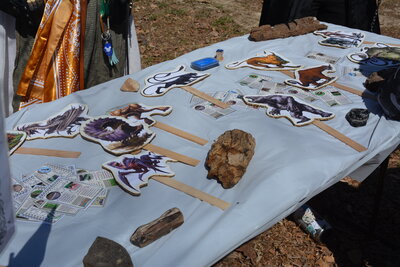
Olivia: They might learn that donkeys are actually a result of hybridization, and that we got specific dog breeds from selective breeding over centuries.
Joe: I hope people will understand that pathogens as they exist in their natural environments are typically of little concern. It’s only when an ecosystem is disrupted in one way or another that they cause issues, either by finding new hosts or increasing in prevalence.
How are you using real-world science to explore dragon biology or ecology?
Olivia: We have a combination of real-world examples of hybridization to explain the concept first before visitors can apply their new knowledge to dragons.
Joe: There are countless examples of viruses causing issues by emerging into new ecosystems, so we were going to use a handful of those during the event.
What are the interactive or hands-on elements visitors can try at your station?
Olivia: This booth will have various trading cards and premade drawing sheets to create their dragons on. We’re also going to set up a piece of foam board for them to pin their drawings on, so every visitor passing by can see these new hybrid dragons!
Joe: We’ll have assorted samples of infected dragon blood for visitors to examine to figure out which universe any given disease has come from, and then they can use that to help us figure out how to treat our infected dragons. Hopefully everyone gets to walk away feeling like a scientist for getting to tinker with pipettes and test tubes!
Are you wearing a costume? If so, tell me about it! Who or what are you portraying, and how does it connect to your station’s theme?
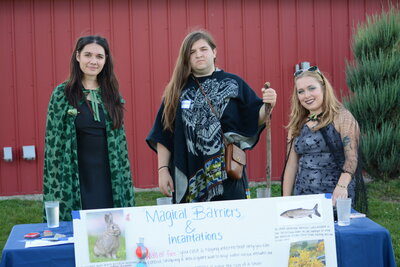
Olivia: My station is viking themed, so a massive fake bearskin piece from a fabric sale at Joann’s is coming in handy! I’ll be wearing a thrifted dress from goodwill, leather bracers and a corset from Spirit Halloween, and some paintball gloves for a warrior’s touch. I’ll also be bringing my weighted dragon plush from Target to carry around. Cosplay doesn’t have to be elaborate or expensive! Just have fun!
Joe: Since we’re playing the roles of epidemiologists and dragon doctors, we are going to go with something of a mad scientist vibe! Lab coats, goggles, masks, things of the sort. Something that really conveys that we’re here to do some proper laboratory work!
What challenges did you face blending dragon biology with accurate science communication?
Olivia: When planning, my partner and I would end up leaning too far fantasy or too far “real world” in our ideas. Finding a balance that ties both in equally was a bit of a challenge.
Joe: Since our fantasy flavor text depends on the epidemiology of infectious disease and the actual activity relies on diagnostics, we did have to go back and forth a bit before we settled on a framework that blended the two while properly communicating the science at play.
How does cosplay and science through a fantasy lens help you engage the audience differently?
Olivia: The audience is nudged into thinking about science through a different lens besides just sitting at school with a textbook, and this allows for critical thinking and applying many different concepts together naturally and in a way that most would find fun.
Joe: I find that basically everyone likes science, just not everyone is too keen on learning science. Sitting down and reading takes time and attention and not everyone likes watching documentaries. But hanging out at a brewery for a few hours with friends and family, getting into character, and doing some fun activities? Well, that’s something basically anyone can get behind.
How do you see science and storytelling working together in events like this?
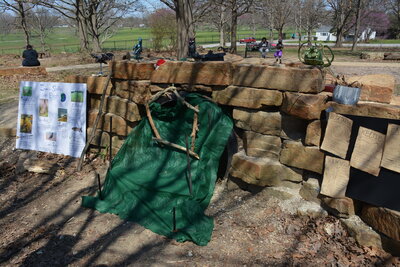
Olivia: Each station needs its own story to draw the audience in and properly explain why we’re here as characters. We can’t just start with a lecture immediately, or the visitor will be super confused. They’re here to see dragons, not some college kid! But with a funny voice and some theatrics, we can get them to learn something and stay engaged the whole time.
Joe: Whether it’s a novel, a scientific paper, or even a conversation, narrative is everything. The tone, the order that facts are communicated, understanding your audience and what their baseline level of knowledge is, they’re all essential to help people understand a topic however big or small. Science communication and storytelling use the exact same toolbox and so combining them can strengthen your abilities as an educator if you’re smart about it.
What do you think dragons can teach us about real-world ecology or evolution?
Olivia: Dragons are filled with infinite possibilities and live in all sorts of environments in fiction. The variety of portrayals and differences in the species across pop culture allow us to explain many different concepts, some not even directly tied to the species itself.
Joe: Dragons are something that people have written stories about for millennia and there are virtually infinite variants to pull from. Many of these either have some biological concepts underlying their creation or their fantasy elements can serve as a jumping-off point for some fun speculative evolution. Want to have a good time? Have a drink or two with a biologist and try to figure out how fire breath works, trust me.
How does participating in outreach like this benefit you as a scientist or student?
Olivia: Creating models is an essential part of scientific education. If you can’t properly teach a concept to somebody who has no prior knowledge on the subject, then you don’t know the concept as well as you should. Being able to explain something clearly is an essential skill as a scientist, especially within academia.
Joe: I would love to turn outreach into a career. Like I said before, science communication is an open niche until we can find more effective ways to reach the public in the digital age, so I want to get as much experience as I can so that when I’m ready to start my career I already have a strong foundation of communication and outreach to stand on. So far Cosplay for Science has given me plenty of opportunities to develop as a communicator and I’m extremely grateful for that.
What advice would you give other students who want to mix creativity with science?
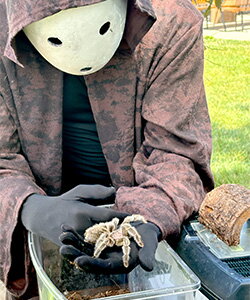
Olivia: Brainstorm, brainstorm, brainstorm! This station wasn’t built in a day. It took hours of discussion, modeling, trial and error, and scrapping ideas that didn’t work. Allow yourself to rework or throw out ideas and create something that you’re confident in.
Joe: Get. Weird. With. IT. Creativity is making something completely new, of course it’s going to seem weird at first. Embrace your weird ideas and at least explore them, play with them, and see how deep they can go before you reject them. And please allow yourself to fail. Your creative works are the ultimate safe space to try and fail, and even if what you try doesn’t work out the way you expect, I promise that you’ll still gain some skills that you’ll be able to use elsewhere. Time spent creatively is never wasted.
If you could invite one (friendly) dragon from any universe to the Expo, who would it be and why?
Olivia: Haku from “Spirited Away”! He seems like a curious person who will enjoy every detail we put into these stations. He seems like someone who always wants to learn and improve his mind.
Joe: Paarthurnax from Skyrim! That dude has wisdom for days; I’d just let him yap as long as he wants about whatever he wants.